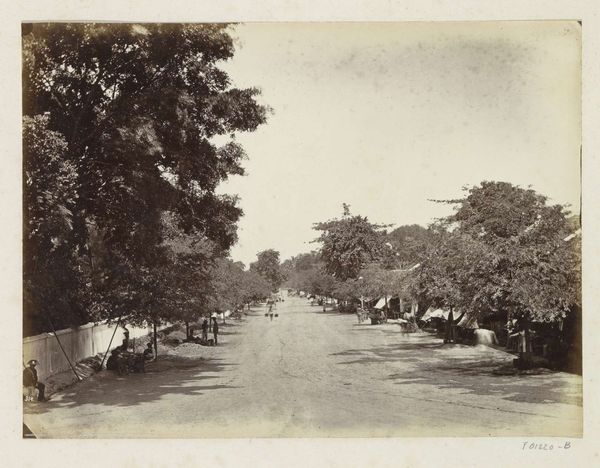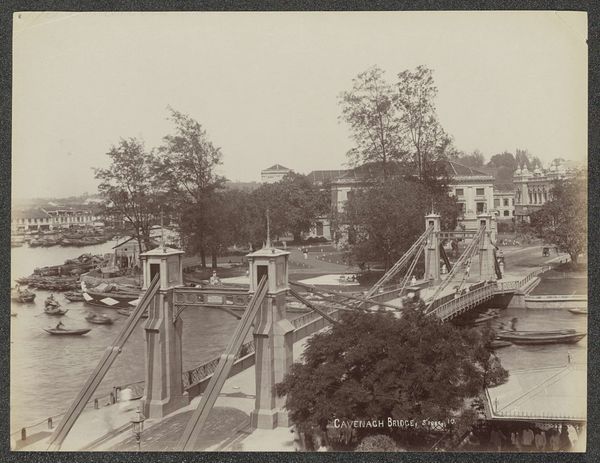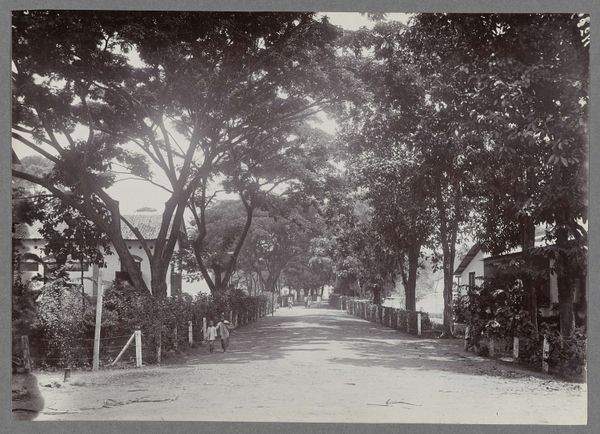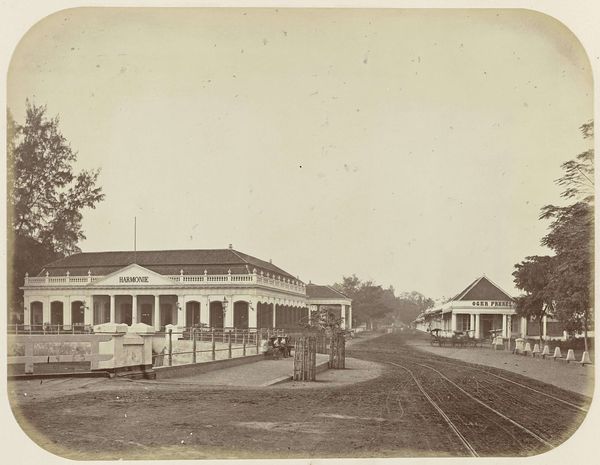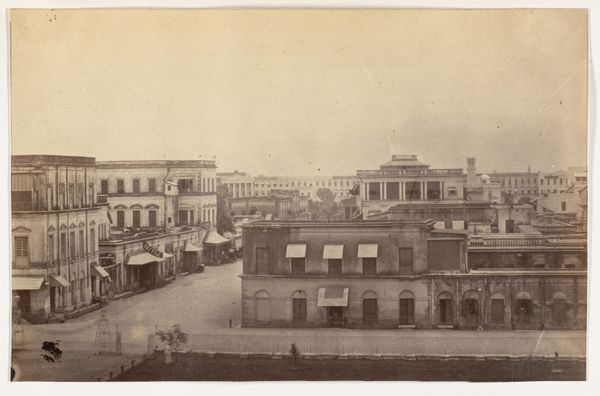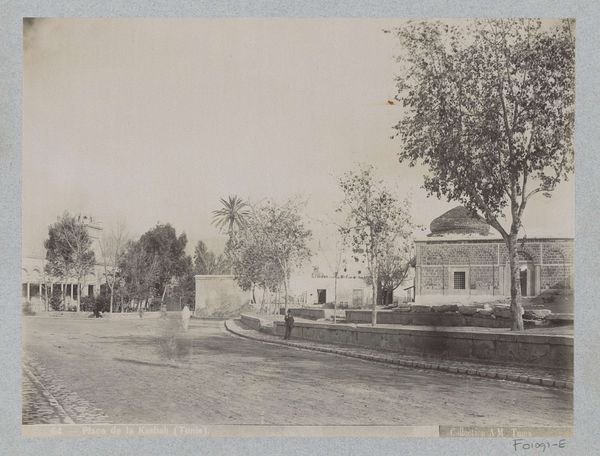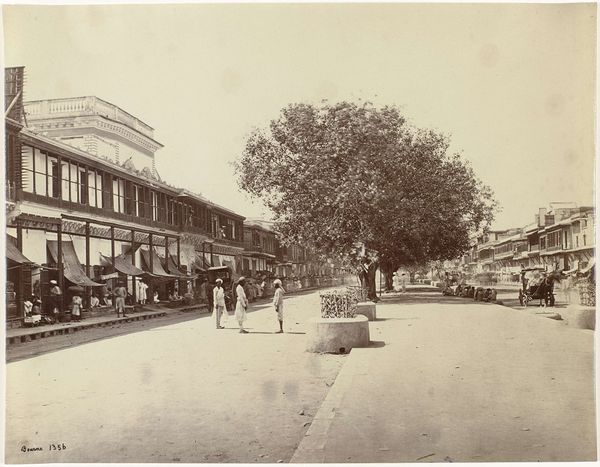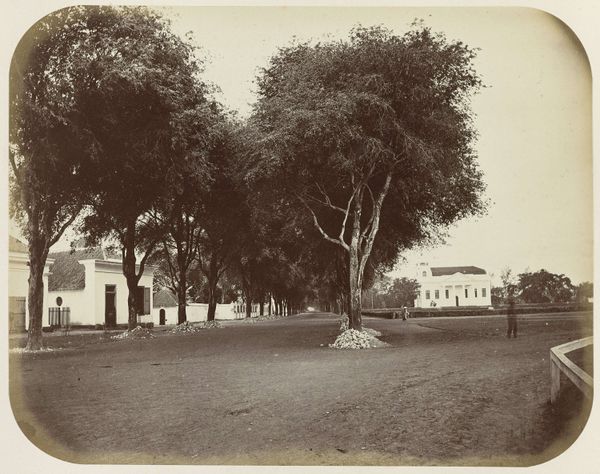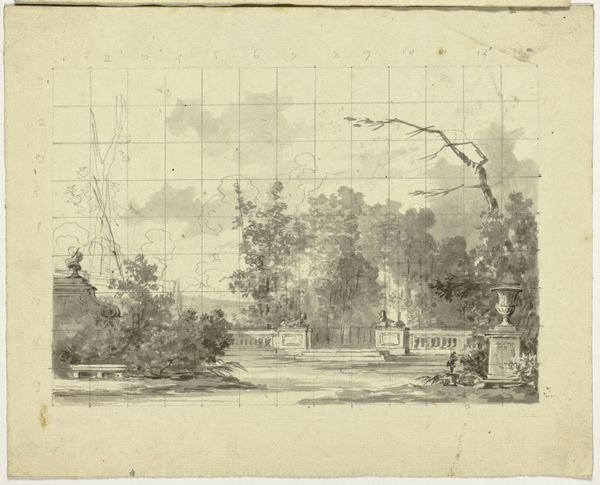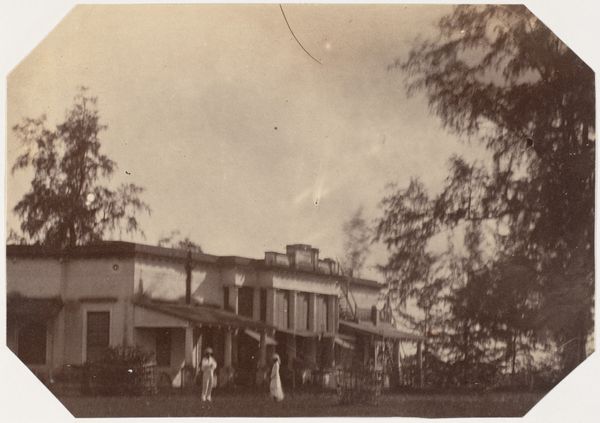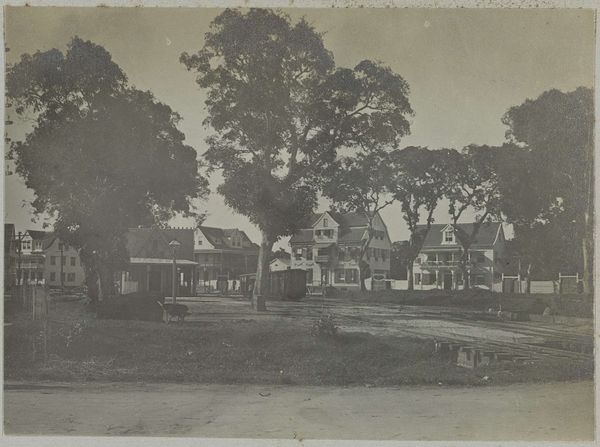
Gezicht op het Japans paviljoen tijdens de Wereldtentoonstelling van 1873 in Wenen, Oostenrijk 1873
0:00
0:00
photography, architecture
#
landscape
#
outdoor photograph
#
photography
#
historical photography
#
japonisme
#
architecture
Dimensions: height 319 mm, width 479 mm
Copyright: Rijks Museum: Open Domain
This photograph by Klösz captures the Japanese pavilion at the 1873 World Exhibition in Vienna, Austria. The composition is structured around a central pathway leading the eye towards the pavilion, framed by towering flagpoles and meticulously arranged foliage. The pavilion's architecture, with its horizontal lines and pagoda-like roof, offers a stark contrast to the vertical thrust of the distant minarets and the dome of what appears to be an Islamic-style structure. Klösz uses the photographic medium to create a semiotic dialogue between East and West, traditional and modern. The pavilion, a signifier of Japan, is placed within a European context, highlighting the exhibition's theme of cultural exchange and the commodification of global identities. The formal juxtaposition creates a discourse on power, representation, and the exoticization of the other. Klösz encourages us to question the categories and values that shape our perceptions of the world.
Comments
No comments
Be the first to comment and join the conversation on the ultimate creative platform.
